William Merritt Chase: the search for an identity
Venice is a city of a thousand surprises, always at the forefront of the arts. Even this time it has not spared itself, so much so that until May 28 it is hosting in one of the most beautiful palaces on the Grand Canal, the 17th-century Ca’ Pesaro, a major retrospective devoted to the American artist William Merritt Chase. The exhibition “William Merritt Chase (1849-1916). A Painter between New York and Venice” has been organized by the Fondazione dei Musei Civici di Venezia in co-production with The Philips Collection in Washington DC, Museum of Fine Arts in Boston, and Terra Foundation for American Art. It includes some 60 works mainly from public and private U.S. collections, displayed on the second floor of Ca’ Pesaro, built in the seventeenth century by Baldassarre Longhena.
The exhibition traces the history of the great American artist and shows the transformation of his painting and the arrival to his own personal style. An innovative and gifted artist, traveler and scholar of European painting that preceded him, William Merritt Chase between 1877 and 1878 sojourned in Venice and fell deeply in love with it: here he worked in direct contact with other painters, studied the artists of the past, and depicted the city in several luminous and realistic works, some of which are on display in the first room of the exhibition. Returning to New York, he purchased a large studio in the Tenth Street Studio Building in 1878. This studio, a place of creation and meeting with artists, art dealers and collectors, was furnished by Chase with various oriental and antique objects and represented in several works such as “Self-Portrait in the Fourth Street Studio” featured in this exhibition.
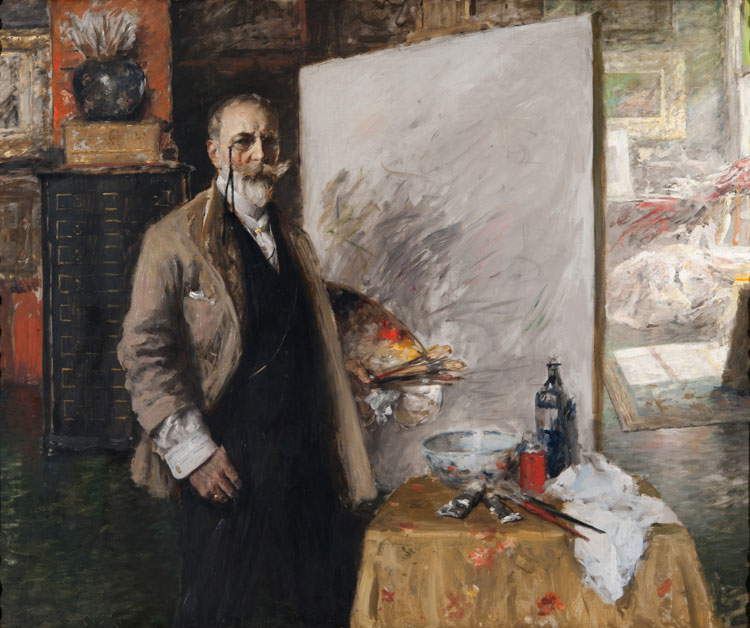 |
| William Merritt Chase, Self-Portrait on Fourth Street (1915-1916; oil on canvas, 33.4 x 161.3 cm; Richmond, The Richmond Art Museum) |
A recurring topos in Chase’s painting is that of women: family members, such as his wife Alice Gerson Chase, or students in some course taught by the painter, women were often portrayed in proud and confident poses that in past portraiture were reserved for dignitaries and leaders. These are women devoted to intellectual pursuits such as literature and art, about to go out and entertain, modern and independent women. Several full-length female portraits can be admired in the exhibition, and among them stands out a work that in my opinion is very significant, “Woman with a White Shawl”; in it a woman with a determined and proud gaze poses in the half-light, illuminated precisely by the white shawl she wears and by her own luminous face. Another subject often present in Chase’s works is her large family; in several paintings such as “Reflections” and “Artist’s Wife,” Alice Gerson Chase is depicted intent on looking at her husband or absorbed in her own thoughts, while many other works show her children playing carefree games or observing their father’s canvases being made in the New York studio; works of great intimacy and tenderness that show some of the pastimes of the time and the daily routine of a happy family.
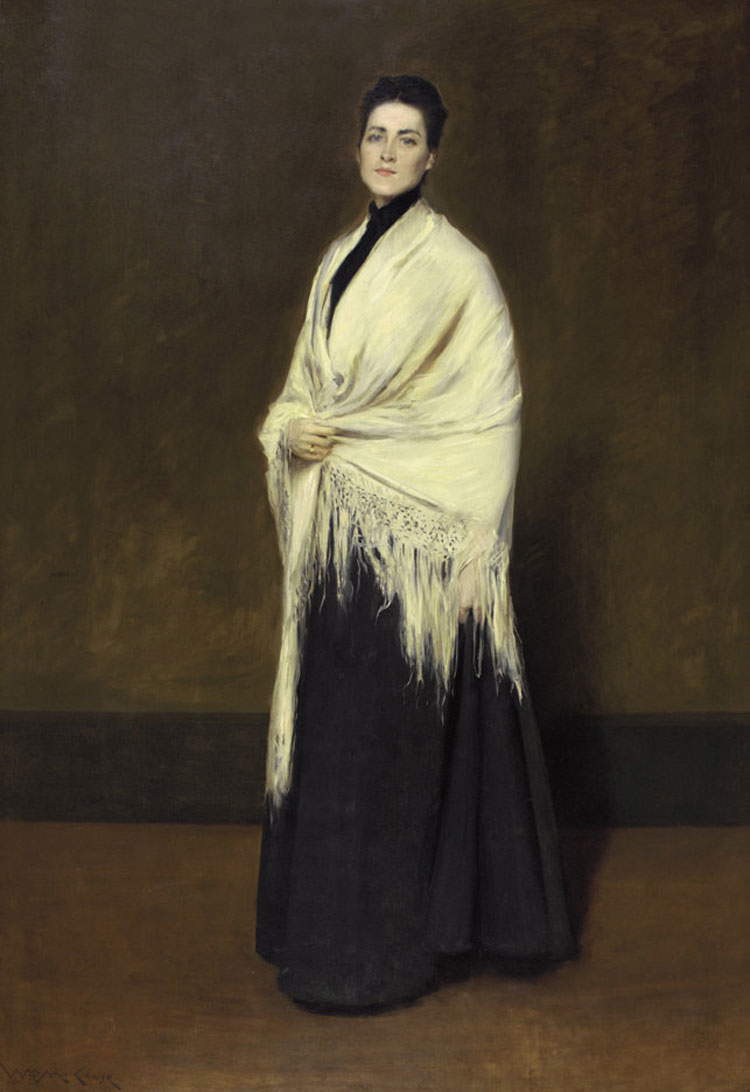 |
| William Merritt Chase, Woman in the White Shawl (1893; oil on canvas, 190.5 x 132.1 cm; Philadelphia, Pennsylvania Academy of the Fine Arts) |
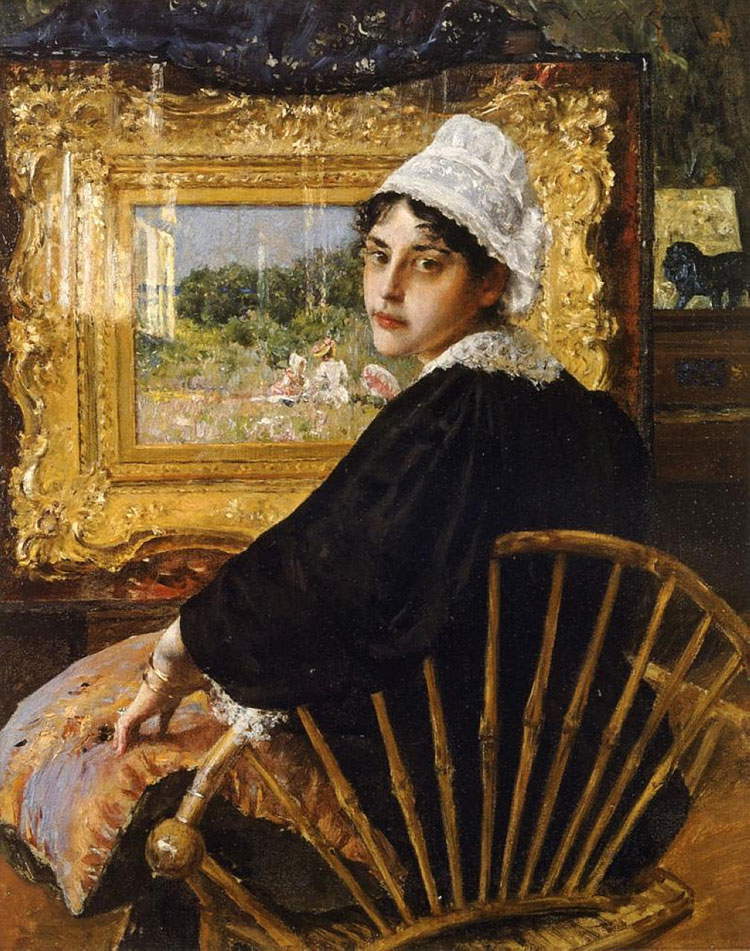 |
| William Merritt Chase, Artist’s Wife (1892; oil on canvas, 40.6 x 50.8 cm; Private collection) |
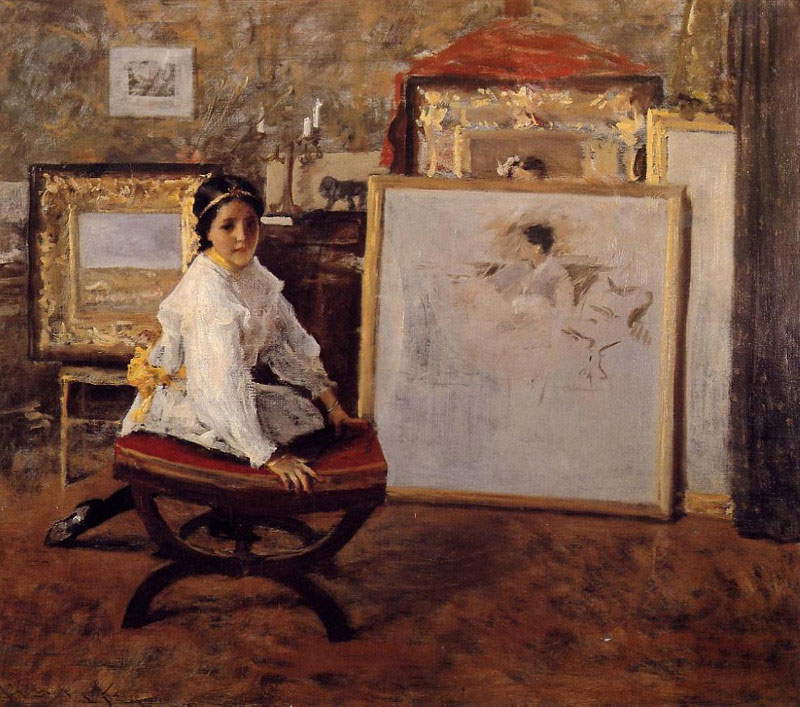 |
| William Merritt Chase, “Were You Talking to Me?” (ca. 1897; oil on canvas, 96.5 x 109.2 cm; Youngstown, Butler Institute of American Art) |
From the early 1880s Chase devoted a great deal of his time to painting parks, green spaces and vacation spots: meeting places for the American upper middle class, they show Chase’s own personal style, which through bright colors was able to render their atmosphere of leisure and relaxation. A place very dear to the painter is Shinnecock Hills, located along the southern coast of Long Island near the town of Southampton. Here the painter taught courses in landscape painting en plein air and devoted himself to depicting the wide beaches and sand dunes, the low vegetation and the clear atmosphere, making use of bright colors and quick touches.
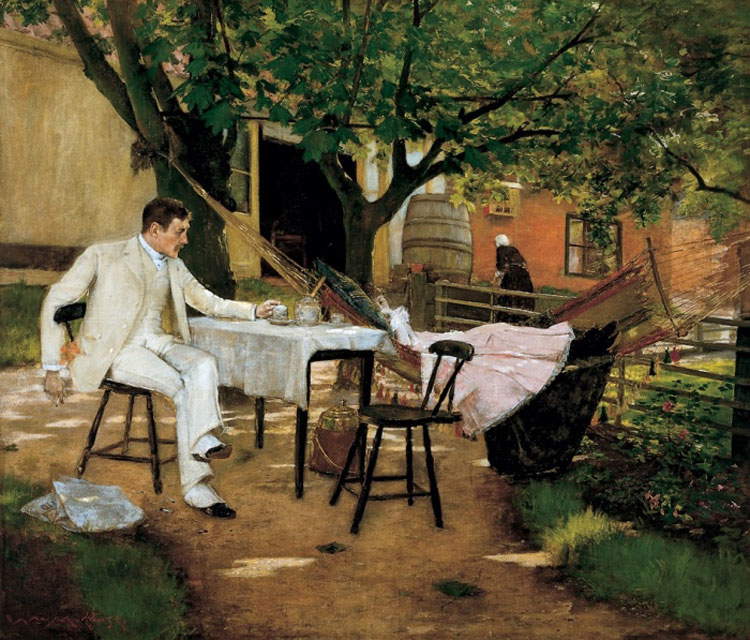 |
| William Merritt Chase, Light and Shadow (1884; oil on canvas, 165.7 x 194.3 cm; Omaha, Joslyn Art Museum) |
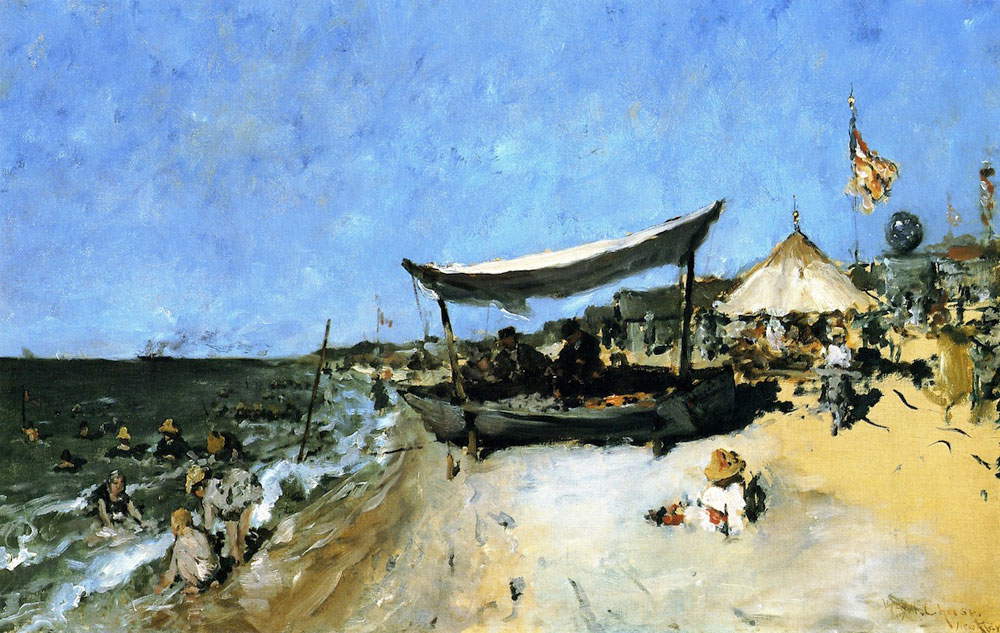 |
| William Merritt Chase, On the Shore (c. 1884; oil on canvas, 56 x 86.5 cm; Private collection) |
 |
| William Merritt Chase, Lazy Hours (c. 1894; oil on canvas, 64.8 x 90.2 cm; Fort Worth, Amon Carter Museum of American Art) |
Beginning in the early twentieth century, Chase returned to Europe as a companion to some of his pupils. In addition to the great art capitals such as London, Madrid and Florence, he could not miss in 1913 a stay in his beloved Venice, where it all began, and which he portrayed in several views.These are works that no longer adhere to strict academic precepts, but are free in brushstroke and color, personal, and expressing this artist’s pure pleasure in painting. In “Venetian Balcony,” the artist paints the semi-darkness of his room at the Hotel Gran Canal et Monaco, brightened by a few gilded objects, and the transition to the light given by the water and sky seen through a balcony; a somewhat unusual depiction of Venice that shows how the artist is able to detach himself from “common” representations and work out his own vision of things.
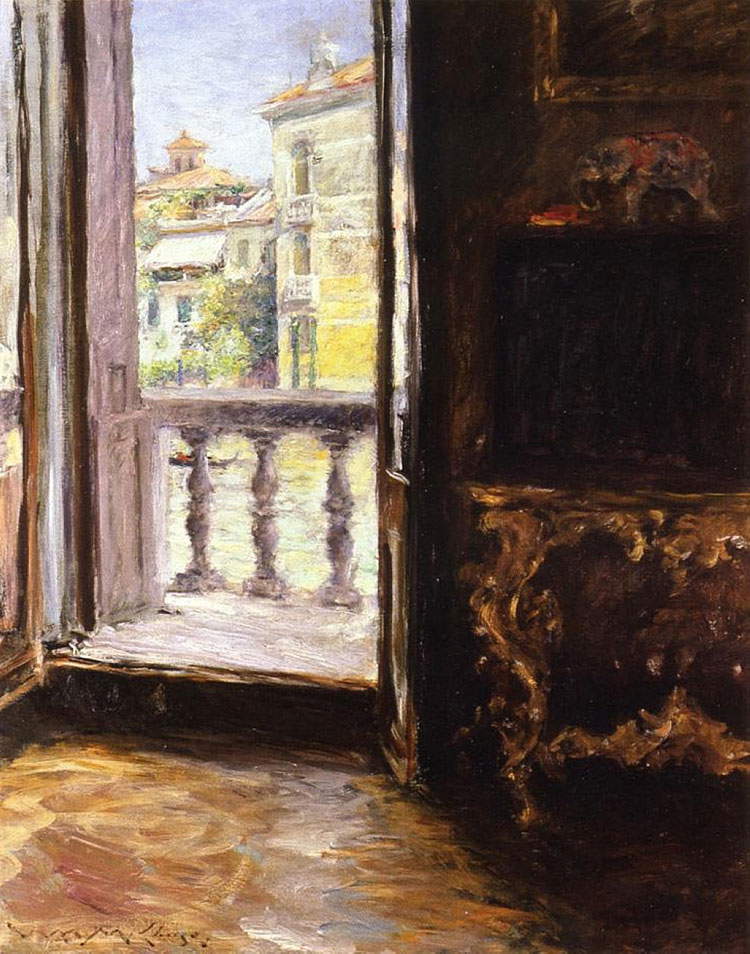 |
| William Merritt Chase, Venetian Balcony (1913; oil on canvas, 88.9 x 71.1 cm; Saint Joseph, Albrecht-Kemper Museum of Art) |
A cosmopolitan artist, William Merritt Chase is considered one of the greatest interpreters of American painting and a point of reference for many young American artists such as Georgia O’ Keeffe, Joseph Stella, and Edward Hopper. This exhibition presents an overview of William Merritt Chase’s life, a life spent between teaching and investigating reality in many of its aspects, a life of interpretation in a constant search for his style and identity.
Warning: the translation into English of the original Italian article was created using automatic tools. We undertake to review all articles, but we do not guarantee the total absence of inaccuracies in the translation due to the program. You can find the original by clicking on the ITA button. If you find any mistake,please contact us.





























